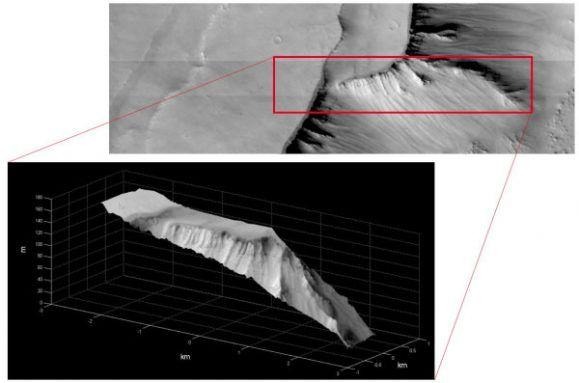ESA ExoMars TGO Orbiter Snaps First Images Using Onboard Instruments
The ESA Mars orbiter called ExoMars Trace Gas Orbiter (TGO) is on station in orbit around the Red Planet and has sent back the first images of Mars taken with its on-board instruments. The TGO is orbiting Mars in an elliptical orbit right now that brings the orbiter between 230 and 310 km above the surface of Mars to a farthest distance of around 98,000 km every 4.2 days. During its last two orbits it has been testing out its instruments and making calibrations as needed.
Eventually the TGO will be placed in a circular orbit about 400 km above the surface of the planet. The main goal of the TGO is to make an inventory of the rare gases that make up less than 1% of the remaining Mars atmospheric volume. The gasses it is looking for include methane, water vapor, nitrogen dioxide, and acetylene. The gas the team and the instruments most want to find is methane, which is associated with biological life on Earth.

TGO also carries a neutron detector called FREND that will measure the flow of neutrons from the surface of Mars in an effort to find water or ice below the surface of the planet. The tool has found regions with higher and lower known neutron flux already, but the team says that it will take months to provide statistically significant results.
TGO also has a Color and Stereo Surface Imaging System that has so far captured 11 images during the first close flyby of the planet on November 22. The main image you see here is one of the pictures it took. The closest approach by the spacecraft so far was 235 km from the surface as it flew over the Hebes Chasma region of Mars and these are some of the closest images the spacecraft will ever take since the final altitude of the orbit will be much higher. The camera team has also finished producing a 3D reconstruction of a region in Noctis Labyrinthus from a pair of stereo images TGO snapped.
"We are extremely happy and proud to see that all the instruments are working so well in the Mars environment, and this first impression gives a fantastic preview of what's to come when we start collecting data for real at the end of next year," says Håkan Svedhem, ESA's TGO Project Scientist.
SOURCE: ESA
